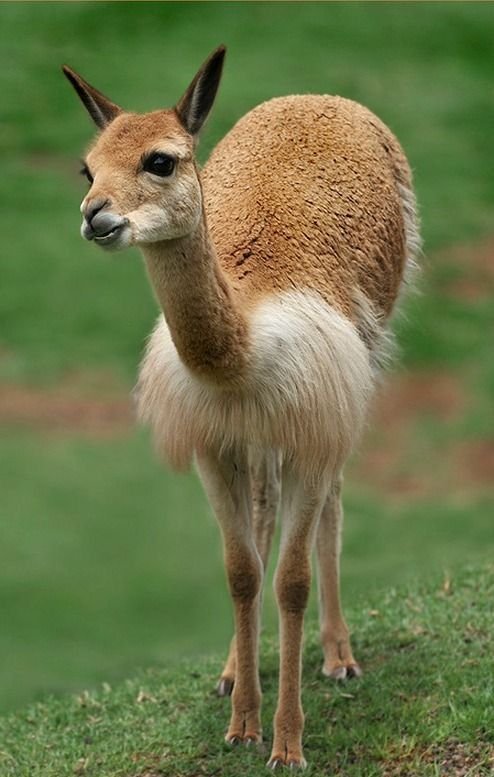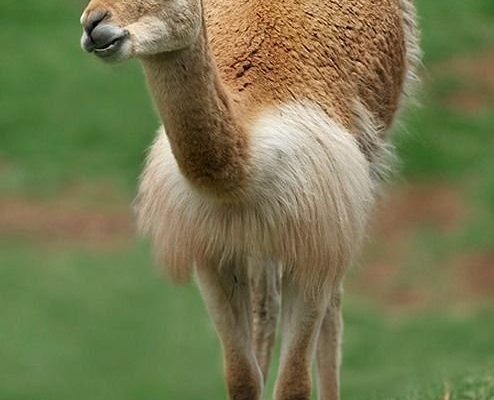
So, what exactly makes the vicuña so special? To understand this, let’s take a step back and look at its history and the ways it intertwines with the identity of peoples living among the Andes Mountains. Think of the vicuña as more than just an animal—it’s a symbol of resilience, beauty, and the profound connection between nature and culture. As we explore its representation in culture and folklore, we’ll uncover why this noble animal holds such a cherished place in the hearts and minds of many.
The Vicuna in Andean Mythology
The vicuña has long been a part of Andean mythology, often viewed as a sacred animal. The Incas, who flourished in this region, believed that the vicuña was a gift from the gods. They regarded it as a *messenger of the sun*, embodying principles of grace and purity. Stories reveal that their deities would often take on the form of a vicuña to interact with the people, bringing them wisdom and guidance.
You might be wondering, how does this connection manifest? For instance, there are various legends where the vicuña aids human life, helping lost travelers find their way or providing inspiration for artists. In many ways, its very being is considered a blessing, and the animal’s soft, warm wool symbolizes the comfort provided by the gods. This deep-seated reverence shapes how the vicuña is perceived even today, influencing contemporary culture and the arts.
The Vicuna in Traditional Art and Craft
Artisan crafts that feature the vicuña serve as another vital link between culture and this remarkable animal. In Peru, traditional textiles made from vicuña wool are among the most prized items. The wool is incredibly soft, warm, and lightweight, making it highly sought after. It’s like wearing a hug—the fabric feels luxurious against the skin.
Artisans create intricate designs that often reflect the natural beauty of the Andes mountains. You may come across patterns that tell stories of the landscape, flora, or even other animals native to the region. These textiles are not just clothing; they embody a connection to the earth and the cultures that have thrived there. This craftsmanship isn’t merely about producing goods—it’s about preserving a heritage that honors the vicuña through art.
Folklore and Stories of the Vicuña
Vicuñas also feature prominently in local folklore, where they often symbolize freedom and elegance. In many stories, they are portrayed as guardians of the high Andean plateaus and protectors of the ecosystem. One popular tale speaks of a vicuña that, upon seeing a traveler in distress due to harsh weather, guides them to safety. This narrative demonstrates the animal’s role as a caring spirit of the mountains.
In another story, the vicuña is depicted as a clever trickster, capable of outsmarting hunters who wish to capture it. This reflects the animal’s agility and intelligence while serving as a warning against greed and exploitation. Such folktales not only entertain but also impart moral lessons about coexistence with nature and respect for its creatures.
Modern Representation of the Vicuña
In contemporary culture, the vicuña is not just a relic of the past; it continues to thrive in various forms. From logos of brands that seek to capture the spirit of the Andes to ecological campaigns advocating for wildlife conservation, the vicuña remains a relevant symbol.
You can often spot this majestic animal featured in documentaries that explore the rich biodiversity of South America. These films portray not just the physical beauty of the vicuña but also its ecological importance. As a keystone species, the vicuña plays a crucial role in maintaining the balance of its habitat, and understanding this connection helps foster a sense of responsibility towards preserving its environment.
The Economic Significance of the Vicuña
The vicuña isn’t just a cultural symbol; it also plays a crucial economic role in Andean communities. Traditionally, these animals were hunted for their wool, but today, conservation efforts have shifted the focus toward sustainable practices. As a result, communities have developed a unique economic model where they protect vicuñas and harvest their wool through shearing rather than killing.
This sustainable method not only helps retain the population but also empowers local communities. The wool is sold in international markets, allowing these communities to thrive economically while also fostering pride in their cultural heritage. It’s a win-win situation: the vicuña is preserved, and people can earn a living.
The Vicuña as a Symbol of Conservation
In recent years, the vicuña has emerged as a powerful symbol of conservation efforts. With increasing awareness of biodiversity loss, this animal is often showcased in conservation campaigns that aim to protect not just itself but the entire Andean ecosystem.
You might see organizations using the vicuña to inspire people to take action against climate change or habitat destruction. Illustrating the vicuña’s connection to the land encourages a broader understanding of environmental stewardship among various audiences. It serves as a reminder that even the most delicate species can have a significant impact on the health of an entire region.
The vicuña represents more than just a beautiful animal; it embodies the heart and soul of Andean culture. From ancient myths and vibrant textiles to modern conservation efforts, this creature continues to inspire and teach us valuable lessons. It reminds us of the bond we share with nature and the importance of protecting it for future generations.
As we reflect on the significance of the vicuña, we realize that every story and piece of art connected to this animal serves a purpose. They echo the wisdom of our ancestors while urging us to take action in our rapidly changing world. By celebrating the vicuña, we honor its legacy and the myriad cultures that cherish it deeply.

